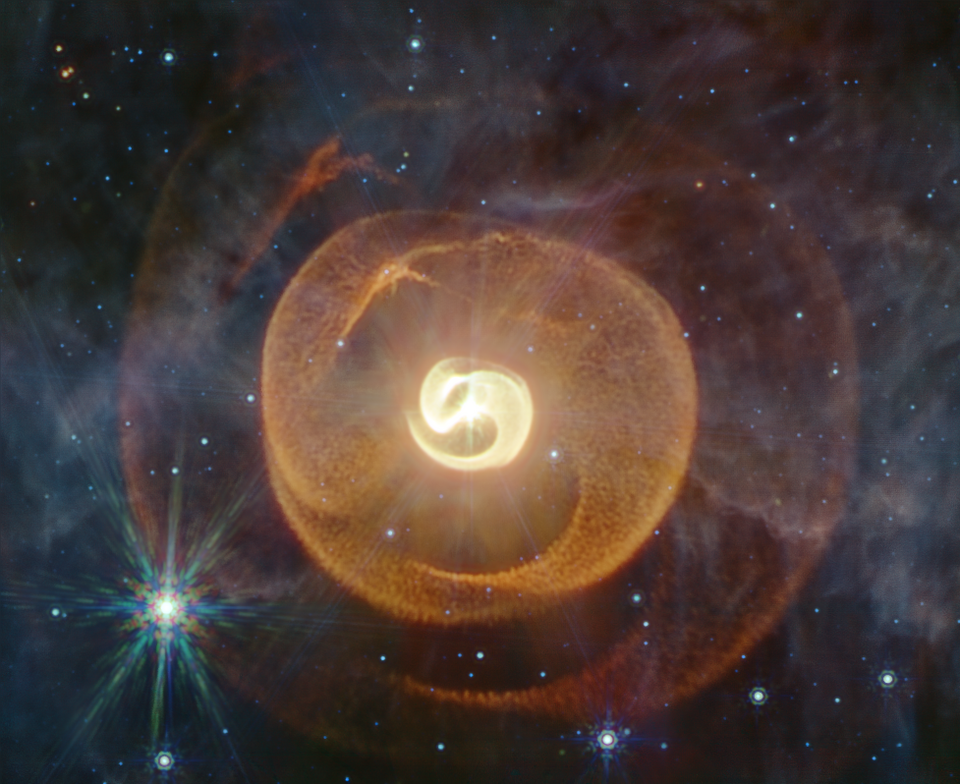Astounding Infrared Image Reveals Complex Dynamics of Dying Stars

In a remarkable advancement in astrophysics, a team of researchers has unveiled an extraordinary infrared image of the Apep nebula, depicting the intricate relationship between two dying stars using data from NASA's James Webb Space Telescope (JWST). The image, revealed just before the thesis examination of one of the researchers, Joe Callingham, showcases the stars entangled in a stunning spiral of dust, reminiscent of a serpent devouring its own tail. The findings were published in two separate papers on arXiv by researchers from institutions including Caltech and Macquarie University.
The Apep nebula, named after the Egyptian god of destruction, was first described in 2018. Recent observations utilizing the JWST have provided critical insights into this cosmic phenomenon. The stars in the nebula are identified as Wolf-Rayet stars, a category of massive stars known for their intense stellar winds and eventual explosive deaths as supernovae. According to Dr. Yinuo Han, a Caltech astronomer and lead author of one of the studies, the observations reveal that the two stars in Apep exhibit nearly equal strength in their winds, leading to the formation of a dust structure shaped like a windsock rather than a traditional pinwheel-like nebula.
The phenomenon is significant as it illustrates the violent processes of stellar death and the origins of carbon dust, which constitutes essential building blocks of life on Earth. As noted by Dr. Ryan White, a researcher from Macquarie University and co-author of the second paper, the JWST data highlighted additional dust shells surrounding the stars, indicating a more complex interaction than initially thought. These shells are cooler and fainter, distributed evenly against the backdrop of swirling dust, revealing the intricate dynamics at play in Apep.
The JWST's infrared imaging capabilities allow for the visualization of hot materials as blue and cooler materials transitioning to red, providing a comprehensive view of the nebula's structure. This advanced technology has revolutionized our understanding of celestial bodies and their lifecycle, particularly in binary star systems where interactions may lead to the creation of new cosmic materials.
The findings underscore the importance of continued observational investments in space telescopes and their role in deciphering the mysteries of the universe. As Benjamin Pope, Associate Professor at Macquarie University, stated, understanding systems like Apep not only enhances our knowledge of stellar evolution but also reveals the beauty inherent in their geometric simplicity, reminiscent of classical physics challenges.
The implications of this research extend beyond mere observation. The insights gained from studying such nebulae can inform future explorations of star formation and the chemical processes that underpin the universe's evolution. As the scientific community continues to analyze these findings, it becomes evident that each discovery opens new avenues for inquiry and understanding in the field of astrophysics.
Advertisement
Tags
Advertisement





